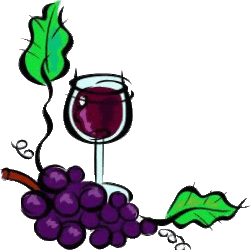 A 13 strong judging team is gearing up to review over 500 wines entered in this year’s Bragato Wine Awards. The twist on this year’s Awards is that all wines entered must be single vineyard wines, a first in the competition’s 23 year history.
A 13 strong judging team is gearing up to review over 500 wines entered in this year’s Bragato Wine Awards. The twist on this year’s Awards is that all wines entered must be single vineyard wines, a first in the competition’s 23 year history.
“We’ve worked hard in past few years to enable the Bragato Wine Awards to evolve into a single vineyard show”, says Ben Glover, Chair of Judges and Owner/Winemaker of Glover Family Vineyards. “The Bragato Awards are focused on recognising that exceptional grape growing is the foundation of making wines that express a true quality of place.”
“By making the shift to a single vineyard show we’re allowing our industry to express the Turangawaewae of their distinctive sites. This change highlights the Bragato Awards as being truly unique among New Zealand wine shows.”
Australian judge David Stevens-Castro will add an international perspective to the 2017 judging team. Mr Stevens-Castro is currently a stage two student in the Institute of Masters of Wine programme, the Wine & Beverage Manager at IHG’s Crowne Plaza Surfers Paradise, and owner of PAIRED Media.
Judging of the 2017 Bragato Wine Awards will take place over 16 and 17 August at Mt Smart Stadium in Auckland. Trophy winning wines will be revealed at the New Zealand Winegrowers National Romeo Bragato Conference in Marlborough, held from 30 to 31 August. Competition results can be viewed from 1 September on www.bragato.org.nz.
Additional information:
- The Bragato Wine Awards are held each year as part of the New Zealand Winegrower’s National Romeo Bragato Conference.
- The Awards recognise that exceptional grape growing is the foundation of making wines that express true quality of place.
- For more information visit www.bragato.org.nz
Judging Team:
Chair of Judges – Ben Glover
Judges – Rod Easthope, Francis Hutt, Jeremy MacKenzie, James Millton, Helen Morrison, Simon Nunns, Barry Riwai, Liz Wheadon
International Judge – David Stevens-Castro (Australia)
Associate Judges – Hannah Burns, Jordon Hogg, Lauren Swift
For further information please contact:
Ben Glover
Chair of Judges
Bragato Wine Awards
029 520 8288
ben@zephyrwine.com
Or
Angela Willis
Manager – Global Events
New Zealand Winegrowers
021 552 071
angela@nzwine.com








 However do not despair! Bistro 52 has been selected as the replacement. This is located in Lower Cuba Street and the Club has been there previously – and it very good it was too. The venue has been booked for Wednesday 19 July, with a 6.00pm start for a 6.30pm ordering of your meal. You will be welcomed with a glass of bubbles! Attached to this Newsletter is a
However do not despair! Bistro 52 has been selected as the replacement. This is located in Lower Cuba Street and the Club has been there previously – and it very good it was too. The venue has been booked for Wednesday 19 July, with a 6.00pm start for a 6.30pm ordering of your meal. You will be welcomed with a glass of bubbles! Attached to this Newsletter is a 

